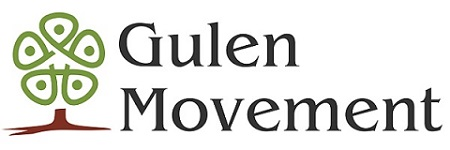
Marcia Hermansen
Brief history of the movement
Broadly speaking, the development of the Gülen movement can be described as occurring through three phases. The first and initial period would be from the 1970s until 1983 and that could be characterized as a time for community building by Gülen and his immediate circle. From 1983-1997 the movement focused on educational projects, such as providing dormitories for college students and establishing primary and secondary institutes with a fo-cus on achievements in math and science while forging strong relationship among dedicated teachers and their pupils.
Internationalization of the movement began with an expansion of business and educational projects into the Turkish speaking ex-Soviet republics in Central Asia with the collapse of the Soviet Union in 1994. With Gülen’s move to the United State since 1997 the focus has further expanded to inter religious dialogue and a global expansion of projects and institutions. (1)
Several themes of the 70s period, the earliest in the development of Gülen’s work continue to be used to evoke memories and in some cases continuities with those times. These memories are remembered within the movement, evoked and re- enacted so as to create community and inspire a sense of participation and allegiance. Although the history of the Gülen movement is relatively brief-some forty years or less, practices of sharing memories inspires a collective sense of community and even sacrality.
One such theme is “camps.”
Camps
I was first invited to a Hizmet “camp” -a spiritual retreat gathering- during the winter season, in fact, the Christmas Holidays of 2005 in the Chicago area. My pre-existing impression of camps was of tents pitched in a forest. This camp however, was held in a summer resort hotel for which a very appealing rate could be negotiated during the winter season, especially at a time when most American families are at home with relatives.
The activities of this camp consisted of reading and discussing Risale Nur and Gülen’s book on the Prophet Muhammad. (2) No dramatic religious practices took place, just a simple round of communal ritual prayers and devotions. (3) Evening lectures were presented by visiting senior Abis (older brothers) and a few outside guests. Almost all sessions were conducted in Turkish. It was a family atmosphere with special classes and activities for children and young people.
It did not occur to me to ask–why call it a “camp”, and it was only later that I learned about the first Hizmet camps and their place in the memory of the Gülen movement. This I was to hear from one of the first members of Gülen’s circle in Turkey, a man who was an early follower of Hoca Effendi from the Days of the Kastanepazari mosque in Izmir, Ismail Büyükcelebi. (4)
After an evening (sohbet) with members of the movement in Chicago, I was granted an interview, conducted in Turkish. The following account of the first camp is based on my notes.
At the first camp in 1968 there were about 50 students. They lived in tents in an open field at Kaynaklar village near Izmir. It was in the open air and there was a row of pine trees on one side of the field. There was a one-room house that had been used as a barn and had to be cleaned up. For cooking they made a hearth out of stones.
All the students (male) were used to dorm life and had never cooked. They learned by experience, taking turns and having Hoca Effendi comment on the meals as they were progressing.
The water came from a well and there was no electricity, only the light of oil lamps. The only place to do laundry was in a stream about 30 minutes away. The second year of the camp there were 120 students and in the third 275.
In the 70s Hoca Effendi moved to the city of Edremit and so did the camps for four years. During this period, in fact, after the 1971 coup there was more pressure on the movement from the state authorities. Gülen himself was jailed for holding the camps as they were viewed as being potentially subversive.
Soldiers would routinely come and check for clandestine activities. (5)
When the students were alerted that such a raid was immanent they would hide their religious books such as copies of the Risale-i Nur. In order to give the impression that fewer attendees were at the camp, they used to put one bed roll on top of another.
They recited litanies of protection such as the prayer (du’a) of those who were at the early Islamic battle of Badr. Once Gülen saw a dream of the Prophet’s uncle, Hamza, just as a raid was immanent. They later learned that at that very time the jeep of a party of soldiers who were coming to investigate had an accident on the road delaying the raid.
At one time in the late 1960s the future leader of the Refah party, Najmettin Erbakan, came to the camps to attempt to rally support for his party. This type of political solicitation, however, was not an interest for Gülen’s students. (6)
In addition to its intrinsic historical interest, my purpose in recounting this camp narrative is that it typifies the type of account that members of the movement would listen to in a group session (sohbet). Often senior Abis will visit local groups and tell them stories of early struggles to establish schools in new and remote areas of the world. In fact, just prior to the interview at which Ismail Büyükcelebi told me about the camp, he had been presenting a sohbet at which he recounted his adventures in starting schools in South East Asian countries such as Thailand and Malaysia.
This would be an example of the sharing and implantation of shared memories–shared very explicitly of events some thirty or forty years old–clearly before the birth of many of the young followers of the movement, yet still relatively recent.
The fact is that such camps may be held by Gülen communities in far-flung situations and locations. They may be viewed as new seeds that are being planted in the hopes that they will flourish and inspire as those first camps did. There is also, perhaps a note of relief that the persecution of the 1970s had abated.
The Gülen community, despite its relative youth, has developed a rich array of symbolic self-understandings and representations. This development of shared symbols and memories creates a sense of unity and collective identification beyond the interests and experiences of individual members.
Source:
Excerpted from the article “The Cultivation of Memory in the Gülen Community”, presented at “Muslim World in Transition: Contributions of the Gülen Movement” Conference, 26-27 October, 2007, London, UK (http://gulenconference.org.uk/)
Notes:
(1) Hakan Yavuz, for example, discusses this development of the movement in Turkish Islam and the Secular State. The Gülen Movement. Syracuse:Syracuse University Press, 2003.
(2) Infinite Light/ Sonsuz Nur
(3) Primarily from al-Jawshan al-Kabir (Somerset NJ: Light, 2006).
(4) Interview Chicago April 16, 2007.
(5) At that point visibly practicing Islam was considered subversive.
(6) This websites reading suggestions about Mr. Gulen and the movements stance against [party] politics.
– Fethullah Gülen on “Political Islam” versus “Islamic Duty”
– Fethullah Gülen’s view on mixing politics and religion?
– Does Gülen movement ever consider forming a political party?
– What does Fethullah Gülen say about Islamists/Islamism?
Tags: History of the Gülen movement | Participation in the Gülen movement |
Related Articles

Evolution of the Gülen Movement
By the 1990s, there is no doubt that the millions of citizens gathered around the ideas of Fethullah Gülen, along with the hundreds of service projects that they…

What Made the Gülen Movement Possible?
In today’s Turkey Gülen movement represents an Islam, which is liberal and tolerant, which is in favor of the country’s EU bid and democratizing reforms. And this means…

Is Hizmet a Paramodern Example of Islamic Spirituality?
What Hizmet also illustrates is the resilience of a truly paramodern spiritual movement. Despite sustained attacks over a number of decades the movement still exists. The Turkish government…
